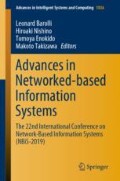Abstract
Accurate and rapid earthquake loss assessments and tsunami early warnings are critical in modern society to allow for appropriate and timely emergency response decisions. In the LEXIS project, we seek to enhance the workflow of rapid loss assessments and emergency decision support systems by leveraging an orchestrated heterogeneous environment combining high-performance computing resources and Cloud infrastructure. The workflow consists of three main applications: firstly, after an earthquake occurs, its shaking distribution (ShakeMap) is computed based on the OpenQuake code. Secondly, if a tsunami may have been triggered by the earthquake, tsunami simulations (first a fast and coarse and later a high-resolution and computationally intensive analysis) are performed based on the TsunAWI simulation code that allows for an early warning in potentially affected areas. Finally, based on the previous results, a loss assessment based on a dynamic exposure model using open data such as OpenStreetMap is performed. To consolidate the workflow and ensure respect of the time constraints, we are developing an extension of a time-constrained dataflow model of computation, layered above and below the workflow management tools of both the high-performance computing resources and the Cloud infrastructure. This model of computation is also used to express tasks in the workflow at the right granularity to benefit from the data management optimisation facilities of the LEXIS project. This paper describes the workflow, the associated computations and the model of computation within the LEXIS platform.
Access this chapter
Tax calculation will be finalised at checkout
Purchases are for personal use only
References
Terzo, O., Walter E., Levrier, M., Hachinger, S., Magarielli, D., Goubier, T., Louise, S., Parodi, A., Murphy, S., D’Amico, C., Ciccia, S., Danovaro, E., Lagasio, M., Donnat, F., Golasowski, M., Quintino, T., Hawkes, J., Martinovic, T., Riha, L., Slaninova, K., Serra, S., Peveri, R., Scionti, A., Martinovic J.: HPC, cloud and big-data convergent architectures: the lexis approach. In: Conference on Complex, Intelligent, and Software Intensive Systems (CISIS) (2019)
Badia, R.M., Conejero, J., Diaz, C., Ejarque, J., Lezzi, D., Lordan, F., Ramon-Cortes, C., Sirvent, R.: Comp superscalar, an interoperable programming framework. SoftwareX 3, 32–36 (2015)
Cima, V., Böhm, S., Martinovič, J., Dvorský, J., Janurová, K., Vander Aa, T., Ashby, T.J., Chupakhin, V.: HyperLoom: a platform for defining and executing scientific pipelines in distributed environments. In: Proceedings of the 9th Workshop and 7th Workshop on Parallel Programming and RunTime Management Techniques for Manycore Architectures and Design Tools and Architectures for Multicore Embedded Computing Platforms, PARMA-DITAM 2018, pp. 1–6. ACM, New York (2018)
Do, X., Louise, S., Cohen, A.: Transaction parameterized dataflow: a model for context-dependent streaming applications. In: 2016 Design, Automation & Test in Europe Conference & Exhibition, DATE 2016, Dresden, Germany, 14–18 March 2016, pp. 960–965 (2016)
Frey, W.H., Field, D.A.: Mesh relaxation: a new technique for improving triangulations. Int. J. Numer. Methods Eng. 31(6), 1121–1133 (1991)
Lauwereins, R., Bilsen, G., Engels, M., Peperstraete, J.A.: Cyclo-static data flow. IEEE Trans. Signal Process. 44(2), 397–408 (1996)
Gautier, T., Besseron, X., Pigeon, L.: KAAPI: a thread scheduling runtime system for data flow computations on cluster of multi-processors. In: Proceedings of the 2007 International Workshop on Parallel Symbolic Computation, PASCO 2007, pp. 15–23. ACM, New York (2007)
Griffin, J., Latief, H., Kongko, W., Harig, S., Horspool, N., Hanung, R., Rojali, A., Maher, N., Fuchs, A., Hossen, J., Upi, S., Dewanto, S.E., Rakowsky, N., Cummins, P.: An evaluation of onshore digital elevation models for modeling tsunami inundation zones. Front. Earth Sci. 3, 32 (2015)
Lee, E.A., Messerschmitt, D.G.: Synchronous data flow. Proc. IEEE 75(9), 1235–1245 (1987)
Louise, S., Dubrulle, P., Goubier, T.: A model of computation for real-time applications on embedded manycores. In: 2014 IEEE 8th International Symposium on Embedded Multicore/Manycore SoCs (MCSoc), pp. 333–340, September 2014
Rakowsky, N., Androsov, A., Fuchs, A., Harig, S., Immerz, A., Danilov, S., Hiller, W., Schröter, J.: Operational tsunami modelling with TsunAWI - recent developments and applications. Nat. Hazards Earth Syst. Sci. 13, 1629–1642 (2013)
Rudloff, A., Lauterjung, J., Münch, U. (eds.): The GITEWS Project (German-Indonesian Tsunami Early Warning System). NHESS - Special Issues. Copernicus Publications, Göttingen (2009)
Schorlemmer, D., Beutin, T., Hirata, N., Wyss, M., Cotton, F., Prehn, K.: Global dynamic exposure and the OpenBuildingMap - communicating risk and involving communities. In: EGU General Assembly Conference Abstracts, volume 20 of EGU General Assembly Conference Abstracts, p. 12871, April 2018
Shewchuk, J.R.: Triangle: engineering a 2D quality mesh generator and delaunay triangulator. In: Lin, M.C., Manocha, D. (eds.) Applied Computational Geometry: Towards Geometric Engineering, volume 1148 of Lecture Notes in Computer Science, pp. 203–222. Springer, Heidelberg (1996). From the First ACM Workshop on Applied Computational Geometry
Voigt, S., Giulio-Tonolo, F., Lyons, J., Kučera, J., Jones, B., Schneiderhan, T., Platzeck, G., Kaku, K., Hazarika, M.K., Czaran, L., Li, S., Pedersen, W., James, G.K., Proy, C., Muthike, D.M., Bequignon, J., Guha-Sapir, D.: Global trends in satellite-based emergency mapping. Science 353(6296), 247–252 (2016)
Acknowledgements
This work was supported by the LEXIS project - the European Union’s Horizon 2020 research and innovation programme under grant agreement No. 825532.
Author information
Authors and Affiliations
Corresponding author
Editor information
Editors and Affiliations
Rights and permissions
Copyright information
© 2020 Springer Nature Switzerland AG
About this paper
Cite this paper
Goubier, T. et al. (2020). Earthquake and Tsunami Workflow Leveraging the Modern HPC/Cloud Environment in the LEXIS Project. In: Barolli, L., Nishino, H., Enokido, T., Takizawa, M. (eds) Advances in Networked-based Information Systems. NBiS - 2019 2019. Advances in Intelligent Systems and Computing, vol 1036. Springer, Cham. https://doi.org/10.1007/978-3-030-29029-0_21
Download citation
DOI: https://doi.org/10.1007/978-3-030-29029-0_21
Published:
Publisher Name: Springer, Cham
Print ISBN: 978-3-030-29028-3
Online ISBN: 978-3-030-29029-0
eBook Packages: Intelligent Technologies and RoboticsIntelligent Technologies and Robotics (R0)

